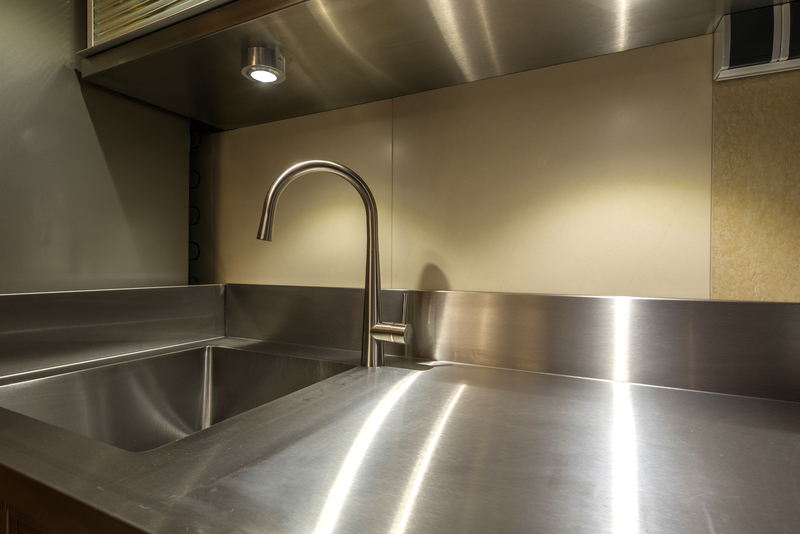Cleaning Myths: The Real Story
Cleaning myths are as old as cleaning itself. Many of us have grown up hearing certain tips and tricks from our parents or grandparents, but do these age-old adages hold up under scrutiny? In today's article, we aim to debunk some of the most common cleaning myths and provide you with the real story. We'll delve into various myths, analyze their origins, and reveal the science (or lack thereof) behind them.
Myth 1: Bleach is the Best Cleaner
One of the most pervasive cleaning myths is that bleach is the ultimate cleaning agent. While bleach is indeed a powerful disinfectant, it is not a cleaner.
Bleach is composed mostly of sodium hypochlorite, which is effective at killing bacteria and viruses. However, it does not remove soil or grime. For bleach to be effective, surfaces must first be cleaned with soap and water. Only then should bleach be applied to disinfect.
It is worth noting that bleach can be harmful to certain surfaces and materials. It can discolor fabrics, corrode metals, and even damage your skin if used improperly. Thus, it is essential to understand when and where to use bleach appropriately.

Myth 2: Newspaper is the Best Way to Clean Windows
We've all heard that using newspaper to clean windows is an excellent, streak-free method. However, this advice is somewhat outdated. Modern newspapers are often printed with soy-based inks that can smear and stain.
Moreover, newspapers can disintegrate when wet, leaving paper residues on your glass. A better alternative is to use microfiber cloths. These cloths are designed to trap dirt and dust without leaving lint or streaks, making them far more efficient and eco-friendly.
Myth 3: Vinegar is an All-Purpose Cleaner
Vinegar has been lauded as a miracle cleaning solution, capable of tackling almost any dirty job. While vinegar is indeed a versatile cleaner, it is not suitable for all surfaces.
Vinegar's acidic nature is excellent for cutting through grease and mineral deposits, but it can also damage natural stone surfaces like granite and marble. The acid can etch into the surface, leaving it dull and susceptible to further damage.
Additionally, vinegar should not be used to disinfect. While it has some antimicrobial properties, it is not as effective as commercial disinfectants like bleach or hydrogen peroxide.
Myth 4: All Cleaning Products are Safe to Mix
One dangerous myth is the idea that mixing cleaning products can enhance their effectiveness. In reality, combining certain cleaning agents can produce toxic fumes or corrosive compounds.
The most notorious combination is bleach and ammonia. Mixing these chemicals generates chloramine gas, which can cause respiratory issues, eye irritation, and even death in high concentrations. Another hazardous mix is bleach and vinegar, which produces chlorine gas.
Always read product labels and use cleaning products as directed. If in doubt, it is best to keep cleaning agents separate to avoid accidental chemical reactions.
Myth 5: Baking Soda and Vinegar Make a Powerful Cleaning Duo
Many people swear by the combination of baking soda and vinegar for various cleaning tasks. While these two substances are useful individually, their chemical reaction when combined is not particularly effective for cleaning.
Baking soda (a base) and vinegar (an acid) neutralize each other when mixed, forming water and carbon dioxide gas. The fizzing reaction may look impressive, but it does not enhance cleaning power. Instead, use baking soda for its gentle abrasive properties and vinegar for its grease-cutting abilities, but separately.
Myth 6: More Soap Equals Cleaner Dishes
It is a common misconception that using more soap will result in cleaner dishes. In reality, excessive soap can leave a residue on your dishes, making them sticky and potentially introducing harmful chemicals into your food.
A small amount of dish soap is generally sufficient for most dishwashing tasks. Follow the manufacturer's instructions and consider the size of your load and the concentration of the soap. Rinse thoroughly to ensure all soap is removed.

The Importance of Proper Technique
Aside from debunking common cleaning myths, it is essential to emphasize the importance of proper cleaning techniques. Adherence to appropriate methods and choosing the right tools and products for each task will yield the best results and maintain the longevity of your surfaces and belongings.
For instance, when mopping floors, using the correct amount of water is crucial. Excess water can seep into floorboards, causing them to warp and promoting mold growth. Similarly, when dusting, using a damp cloth or a microfiber duster can capture dust particles more effectively than a dry cloth, which may only push dust around.
Conclusion
In conclusion, not all cleaning advice is created equal. While some methods have stood the test of time, others are based on misconceptions or outdated information. By debunking these common cleaning myths, we hope to provide you with accurate, science-backed information to make your cleaning routines safer and more effective.
Remember, the key to successful cleaning lies in understanding the properties of the materials you're working with and choosing the appropriate products and techniques. Don't be swayed by hearsay and always be open to learning and adapting your methods as new information becomes available.
Knowledge is power, and when it comes to cleaning, knowing the real story behind these myths can make all the difference in maintaining a healthy, clean, and safe environment for you and your loved ones.


